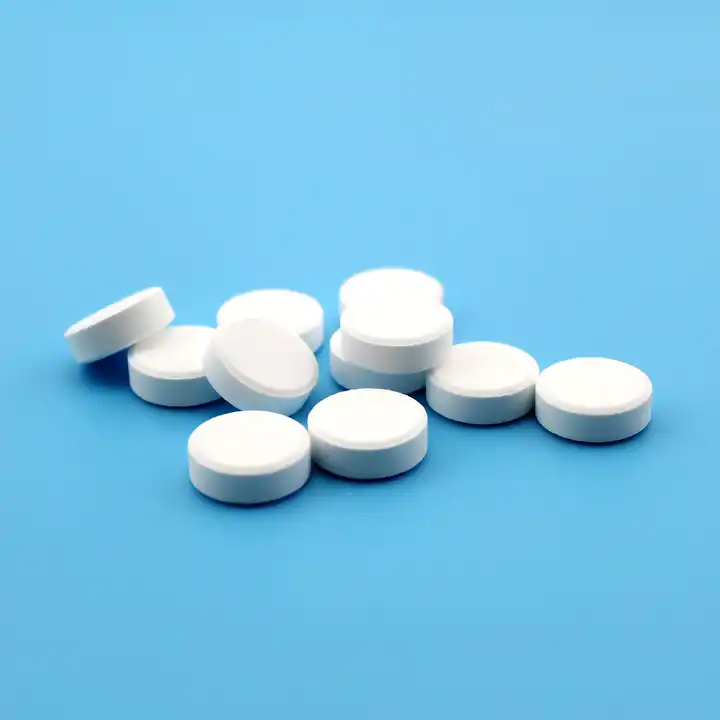
A Comprehensive Exploration of Their Distinctions and Applications
In the realms of disinfection and bleaching, Stable Bleaching Powder and Calcium Hypochlorite have long held significant importance. Despite their often interchangeable use, a comprehensive understanding of these compounds reveals distinct properties that influence their respective applications in various industries.
Historical Context
The discovery of these compounds marked a watershed moment in industrial and health sectors. Since their inception, they have been pivotal in revolutionizing the disinfection and textile bleaching processes. From treating drinking water in the early 20th century to disinfecting wounds during wartime, their role has been paramount in safeguarding public health.
The Chemistry Behind the Compounds
- Molecular Structures:
- Calcium Hypochlorite (Ca(ClO)2): This inorganic compound’s simple molecular structure grants it a rapid rate of dissolution and a prompt release of chlorine upon interaction with water.
- Stable Bleaching Powder (SBP): Its molecular composition is complex, primarily comprising calcium hypochlorite Ca(OCl)2, dibasic calcium hypochlorite, Ca3(OCl)2(OH)4, and dibasic calcium chloride, Ca3Cl2(OH)4. This makes its decomposition slower compared to its counterpart.
- Chemical Reactions:
- Calcium Hypochlorite: When it reacts with hydrochloric acid, it produces calcium chloride, water, and chlorine gas. This chlorine gas has a sharp, choking odor, which can be a determinant of the presence of calcium hypochlorite.
- Stable Bleaching Powder: Owing to its composition, its reactions can be multifaceted, depending on the other compounds it interacts with.
Production Methods
- Stable Bleaching Powder: Produced by the chlorination of hydrated lime using liquid chlorine, this method ensures a more consistent production, albeit at a slower pace due to the multiple components involved.
- Calcium Hypochlorite: Produced by treating lime (Ca(OH)2) with chlorine gas. The direct treatment facilitates faster production, making it more scalable for industrial applications.
Applications in Detail
- Disinfection: Both compounds play a critical role in disinfecting drinking water, ensuring it’s free from harmful pathogens. Their oxidative properties neutralize most of the harmful microorganisms present in the water.
- Textile Industry: The bleaching power of these compounds gives textiles a pristine white finish. However, the choice between the two often depends on the material being bleached and the desired finish.
- Agriculture: They are utilized for disinfecting farming tools and surfaces to prevent the spread of plant diseases.
- Food and Beverage Industry: Beyond just water, these compounds are instrumental in disinfecting and deodorizing in food processing units, ensuring the products are free from harmful contaminants.
- Medical and Health Sector: Hospitals rely heavily on disinfectants, especially in surgical areas. Both these compounds, in their varied forms, play a role in maintaining a sterile environment.
Safety, Storage, and Handling
The reactive nature of these compounds necessitates a stringent safety protocol. Prolonged exposure can result in skin burns, respiratory issues, and other health complications. Thus, it’s essential to store them in cool, dry places, away from direct sunlight and organic materials. In their concentrated forms, they should be kept out of reach of children and pets.
Economic Implications
The global demand for these compounds, driven by their widespread applications, has led to a robust market. The textile and public health sectors remain consistent consumers, with periodic surges in demand due to global health crises.
Environmental Considerations
While they play a crucial role in safeguarding public health, there are environmental concerns attached. Their production and excessive use can lead to water pollution, impacting marine ecosystems. Thus, sustainable manufacturing and responsible usage are the need of the hour.
Stable Bleaching Powder and Calcium Hypochlorite granular, while similar in many respects, have distinct characteristics that dictate their applications. As we continue to rely on them for various needs, understanding their nuances becomes even more crucial. Their importance in today’s world cannot be understated, but as with all potent compounds, they must be used responsibly and sustainably.